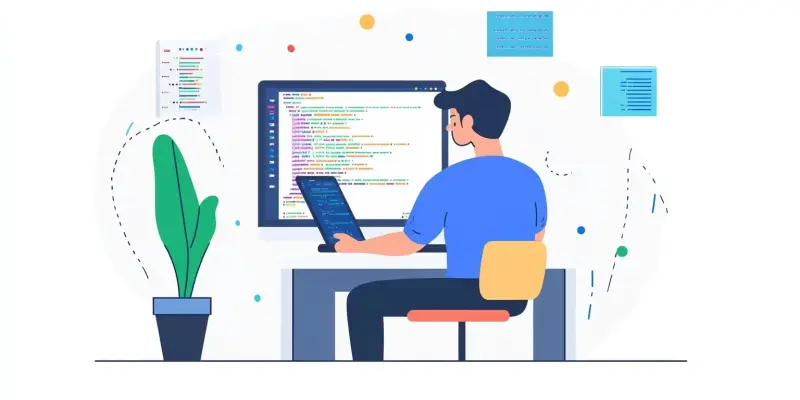The complexity associated with cloud-to-cloud migration has long been a challenge for DevOps teams, draining resources and extending timelines. Businesses looking to transition between cloud environments often face hurdles including resource mapping, security policy validation, and dependency management. These labor-intensive processes can stretch over weeks or even months, leading to disruptions and inefficiencies. Enter StackGen, which promises a revolutionary automated solution for these complex transitions, offering a significant upgrade to the conventional methods of handling cloud migrations.
Automating the Migration Process
Reducing Manual Effort
StackGen addresses one of the most formidable challenges in cloud migrations: the manual effort traditionally required for various tasks. Historically, DevOps teams had to spend countless hours identifying resources, mapping dependencies, and validating security policies. StackGen’s solution changes the landscape by leveraging read-only API access to existing cloud environments. This capability allows the tool to automatically identify resources and their interdependencies, retaining security configurations without the need for manual scriptwriting and recreation of infrastructure.
The automation that StackGen provides results in deployment-ready infrastructure as code (IaC) that mirrors the original environment. This streamlined approach minimizes human errors, ensuring that the migrated environment is both accurate and secure. The ability to automate these processes means that DevOps teams can focus on higher-level strategic initiatives rather than getting bogged down by tedious manual tasks.
Integrating with Major Cloud Providers
StackGen’s versatility in spanning major cloud providers like AWS, Azure, GCP, and Civo highlights its relevance in today’s multi-cloud world. This capability is particularly beneficial in scenarios such as mergers and acquisitions (M&A) or strategic expansions where businesses may need to integrate or transition across diverse cloud platforms. The flexibility to seamlessly migrate across these environments without compromising on functionality or security is a significant advantage. Mitch Ashley of The Futurum Group emphasizes the importance of IaC in reducing the migration timeline and learning curve, preventing potential roadblocks and facilitating smoother transitions.
By simplifying the migration process and ensuring compatibility, StackGen is setting a new standard for cloud migration tools.
Strategic Focus on Optimization
Shifting to Higher-Value Tasks
The automation capabilities of StackGen represent more than just a technical improvement; they signify a strategic shift in how cloud migrations are approached. With the reduced need for manual effort, DevOps teams can redirect their focus toward optimization and innovation rather than being bogged down by rote tasks. This shift allows businesses to leverage their technical talent more effectively, driving higher value in both short-term and long-term projects. Organizations can now allocate more resources to developing innovative solutions and optimizing existing processes, which can lead to competitive advantages in their respective markets.
The automation of mundane tasks frees up time and energy that can be invested in these high-impact activities. This approach not only boosts productivity but also enhances job satisfaction and retention among technical staff.
Practical Applications and Real-World Scenarios
The true test of StackGen’s automated migration tool lies in its real-world application. As businesses deploy these automated migrations, they will better understand the tool’s efficacy and potential for transformative change. Early indications suggest that StackGen can make cloud transitions more routine, less daunting, and significantly faster.
Despite the automation of cloud migrations not being an entirely new concept, StackGen’s approach to it has the potential to set a new benchmark. The emphasis on practical applications and real-world efficacy will ultimately determine its success and the extent to which it can revolutionize cloud migrations.
Looking Forward
Embracing Efficiency and Innovation
With the introduction of automated tools like StackGen, the landscape of cloud migrations is poised for a significant transformation. The ability to automate resource mapping, dependency management, and security validation not only reduces manual effort but also minimizes errors and accelerates the transition process. This realignment of focus from tedious manual tasks to higher-value strategic activities opens up new possibilities for innovation and efficiency within organizations. DevOps teams can now prioritize optimization and drive innovation, which ultimately leads to improved business outcomes and a stronger competitive position in the market.
As companies adopt StackGen and integrate its capabilities into their migration strategies, they are likely to experience streamlined processes and shorter timelines. This democratization of advanced migration capabilities ensures that a wider range of organizations can benefit from the efficiencies offered by StackGen.
Future Considerations
The complexity of migrating from one cloud service to another has long posed significant challenges for DevOps teams, consuming resources and prolonging project timelines. By automating the entire process, StackGen significantly upgrades the traditional methods used in cloud migrations, promising to streamline transitions and drastically reduce the time and resources typically required. This innovative tool addresses the pain points in cloud migration, allowing businesses to conduct migrations with minimal disruption and improved efficiency, ultimately enhancing overall productivity and operational continuity.

